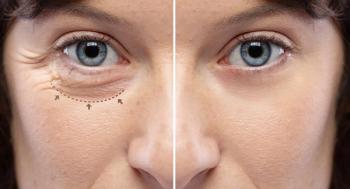
Qlaris Bio announces positive data from 2 clinical trials investigating QLS-111 in patients with primary open angle glaucoma and ocular hypertension
Key Takeaways
- QLS-111 effectively lowers IOP by reducing distal outflow resistance and episcleral venous pressure in POAG and OHT patients.
- The Osprey trial showed the 0.015% concentration of QLS-111 achieved a mean IOP reduction of 3.7 mmHg.
The 2 phase II trials, Osprey and Apteryx successfully met all primary and secondary endpoints.
Qlaris Bio has announced positive topline results from 2 phase II clinical trials investigating QLS‑111 in patients with primary open angle glaucoma (POAG) and ocular hypertension (OHT). The 2 phase II trials, Osprey and Apteryx successfully met all primary and secondary endpoints.
QLS‑111 is a novel topical formulation using Qlaris Bio’s ATP-sensitive potassium channel modulator platform. QLS-111 lowers IOP by relaxing vessels of the vascular and vascular-like tissues distal to the trabecular meshwork, thereby reducing distal outflow resistance and lowering episcleral venous pressure (EVP).
The Osprey study (
Additionally, the Apteryx study (
Professor Ike Ahmed, MD, FRCSC, director of the Alan S. Crandall Center for Glaucoma Innovation at the Moran Eye Center, University of Utah commented on the trials in a press release from the company.
“The robust results of the Osprey and Apteryx trials give me confidence that our patients may soon have an important new treatment option that targets this clear unmet need. Furthermore, the possibility of combining QLS-111 with trabecular meshwork MIGS procedures to address downstream resistance may unlock the potential of these procedures,” said Ahmed.
The company also noted that all QLS-111 concentrations and dose regimens across both studies demonstrated excellent safety and tolerability. No serious adverse events were reported, and investigators did not observe any clinically meaningful hyperemia or other ocular or systemic adverse events.
Barbara Wirostko, MD, FARVO, Chief Medical Officer, Qlaris Bio commented on the results in a press release from the company.
“The data show QLS-111’s synergistic ability to provide significant IOP lowering in patients already on latanoprost,” said Wirostko. “This substantial additive effect demonstrates the potential to significantly benefit patients who do not achieve IOP lowering goals with current therapies. Additionally, we believe the promising tolerability profile of QLS-111 will further enhance the value to our patients by driving improved treatment compliance and adherence. This is supported by the absence of clinically relevant hyperemia, with no corneal changes and no clinically relevant ocular or systemic findings thus far in our studies.”
Reference:
Qlaris Bio announces positive topline data from two Phase II trials Of QLS-111 In patients with primary open angle glaucoma and ocular hypertension. Published February 5, 2025. Accessed February 10, 2025.
https://qlaris.bio/qlaris-bio-announces-positive-topline-data-from-two-phase-ii-trials-of-qls-111-in-patients-with-primary-open-angle-glaucoma-and-ocular-hypertension/
Newsletter
Don’t miss out—get Ophthalmology Times updates on the latest clinical advancements and expert interviews, straight to your inbox.









































